
German Pizza – Flammkuchen – for the rest of our trip, that memorable meal stayed with us.
Germany is known for many things: beer, bratwurst, and beautiful castles come to mind. But what would you say if I told you it should be known for its “pizza?”
Finding German pizza
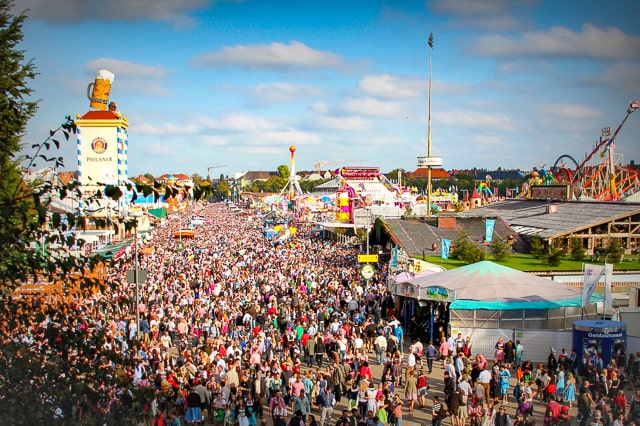
When my friend Lauren and I first started planning our German vacation, the food was the furthest thing from my mind. I’m more of a Mediterranean-cuisine-kind-of-girl, so frankly, I was concerned about enjoying any of our meals in Deutschland. I expected we would be eating pretzels and heavy sausages. The only thing I was potentially looking forward to was the potato-cakes, also known as rösti.
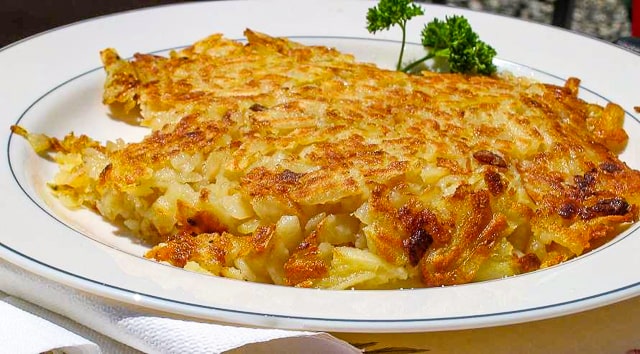
Our trip’s genesis was the annual Oktoberfest, so it makes sense that those foods would be top of mind. They’re easy festival food and provide a solid base for the millions of gallons of beer consumed each year. However, we decided we wanted to explore the festival more, so I began researching road trips.
Germany’s Fairy Tale Route
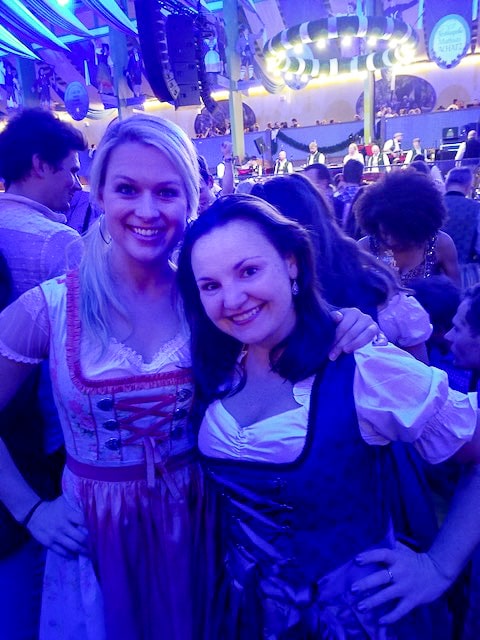
When I first heard of the Fairy Tale Route through Germany’s western countryside, I was instantly enchanted. My inner child delighted as we began plotting stops based on our favorite fairy tales—Sleeping Beauty for me, originating from Sababurg, and for Lauren, Rapunzel, starting from Trendelburg. We would only have six-days to travel the route, so we had hoped to find a good middle ground where we could set up base between day-trips. That’s when we learned about Kassel.
If you weren’t following the Fairy Tale Route or didn’t have an interest in the Brothers Grimm history, you would have little reason to consider this bustling college town. The architecture isn’t representative of the historic timber-framed buildings Germany is known for. It’s not necessarily renowned for its culinary delights. However, Kassel is home to one of the most beautiful castles and the most impressive water installation I’ve ever seen.
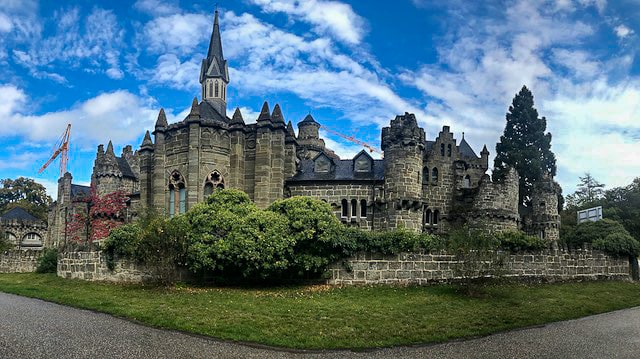
At 240 hectares, Bad Wilhemshöhe is Europe’s largest hillside park and a UNESCO World Heritage site. It contains the castle Löwenburg, Wasserspiele, and miles of trails leading to beautiful structures and captivating photo-ops all around the park.
Located on the outskirts of town, we planned to drive over, park, and find something to eat nearby. A risky move as there are only two real restaurants close to the park’s main entrance and both cater to hotel guests. We could spend 39€ on a buffet or sit outside, in the cold, at Alte Wache. We chose the latter, braving the elements, and were rewarded with one of the best dining experiences of the whole trip.
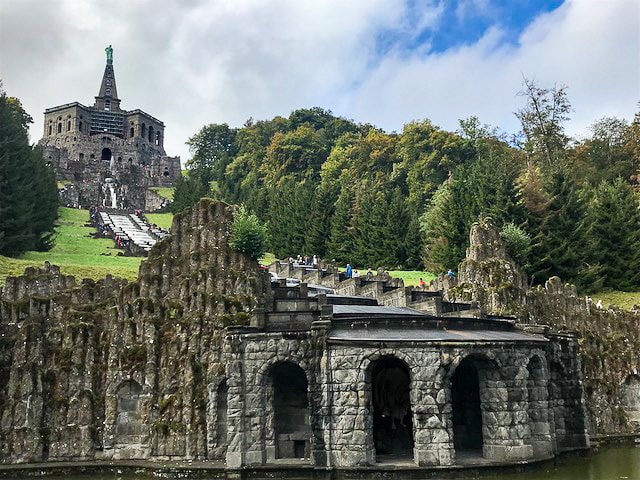
A Delightful Discovery
Upon seating us, our gracious waiter turned on a portable heater nearby. He gave us blankets to stave off the cold before handing us our menus. I don’t speak much German beyond the common courtesies: hello, please, thank you, and goodbye. Although I have never had much trouble finding my way around a menu, I struggled in Germany. My adventurer’s spirit to the rescue, I often went with the house recommendation.
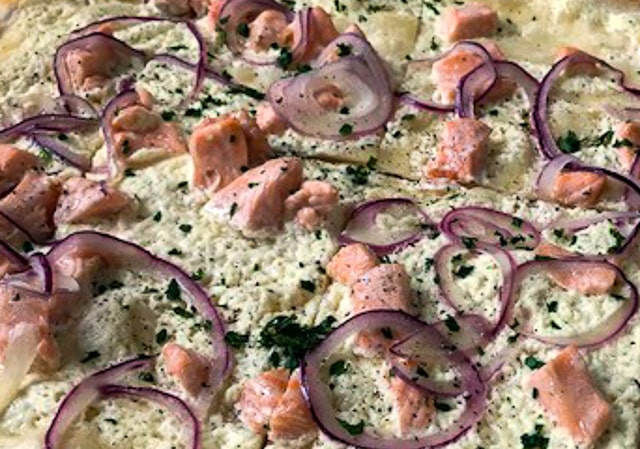
When my flammkuchen, a word I had no basis of comparison for, was served, my first thought was, “huh, definitely not something I would have ordered if I had known what it was.” And then, I took a bite.
Traditional flammkuchen is made with crème Fraiche or sour cream, lardons, and onions. I received the salmon version. Oh. My. Goodness. When I tell you, it melted in my mouth, I mean it literally.
German pizza debate
What makes or breaks flammkuchen opens the age-old debate about traditional pizza. Do you prefer thin-crust or deep dish? Like most pizza, flammkuchen is all about the decidedly thin crust. So thin, it’s almost a cross between bread and cracker and results in a perfect crunch in every bite.
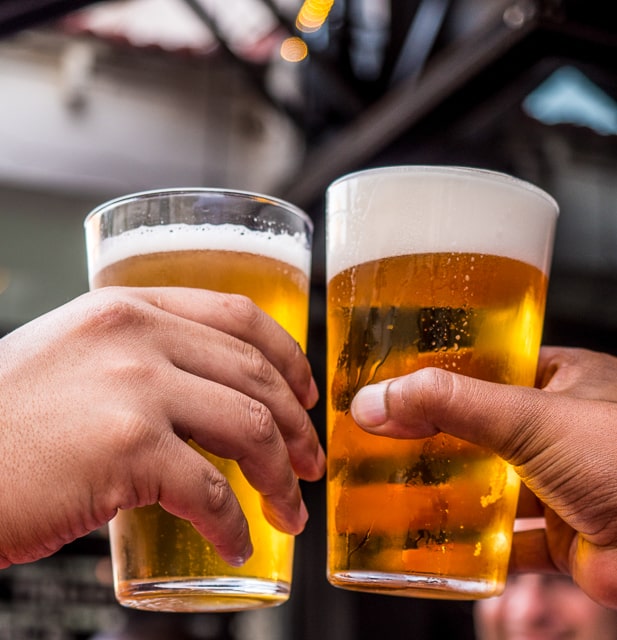
The style of the crust comes from humble origins. German bakers in the long-disputed region of Alsace would use bits of bread to test their ovens before baking their daily batch. Eventually, the bakers added readily available ingredients to enjoy as a snack. And from there, a scrumptious staple was born.
Alte Wache changes their menu seasonally, though almost always have the traditional, Elsässer named for the region it hails from. The salmon, or in German, lachs, was the special and should not be missed when available.
The red onions are light and delicate without overpowering the other ingredients or your breath. The sour cream provides a velvety, rich base. The salmon, oh, the salmon. It’s warm and flaky without being overdone. Buttery and refreshing. Simply put, flammkuchen at Alte Wache is one of the best things I have eaten – ever.
Dreaming of Flammkuchen
For the rest of our trip, that memorable meal stayed with us. Wandering around Munich between festival days, we found ourselves on the hunt for more flammkuchen. We finally found a restaurant with good reviews and a similar preparation. It wasn’t bad; it just didn’t elicit the same feeling of warmth and decadence I had been longing for. I have also tried making it at home, though I haven’t been able to get the crust just right. So, my dreaming continues.
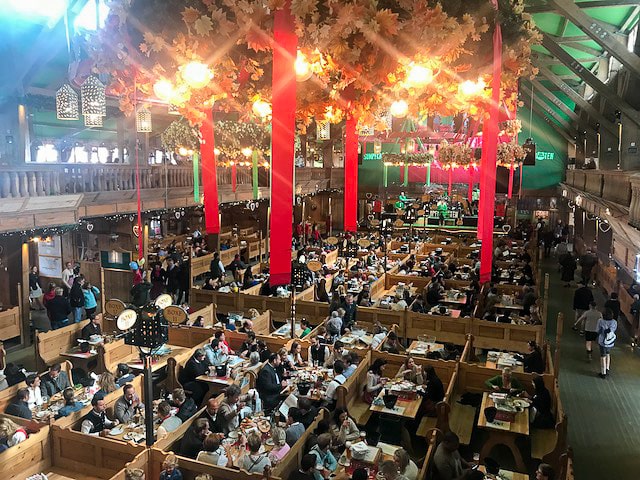
When we returned home, everyone wanted to hear about Oktoberfest. Was the beer any good? Does everyone dress up? Did we make any new friends? I answered each question quickly and perfunctorily before asking, but have you heard of flammkuchen?
It was the last thing I would ever have expected to find, much less enjoy in traditional Germany. Beyond the pilsner, potatoes, and palaces, there’s something else the country should be known for. It’s called flammkuchen, and it’s how the Deutsche do pizza.
Useful websites
For more information, visit Wache – Kassel – Bad Wilhelmshöhe – Fairy Tale Route.

About Kerri Smith ~ Laid off at the height of a global pandemic, Kerri has detoured from her traditional career path in search of a life fully lived. Whether traveling solo or with friends, Kerri enjoys traveling best when the most is made of every experience. Good, bad, or otherwise, her motto is, “But would it make a good story?”

You might be a travel writing foodie if…
